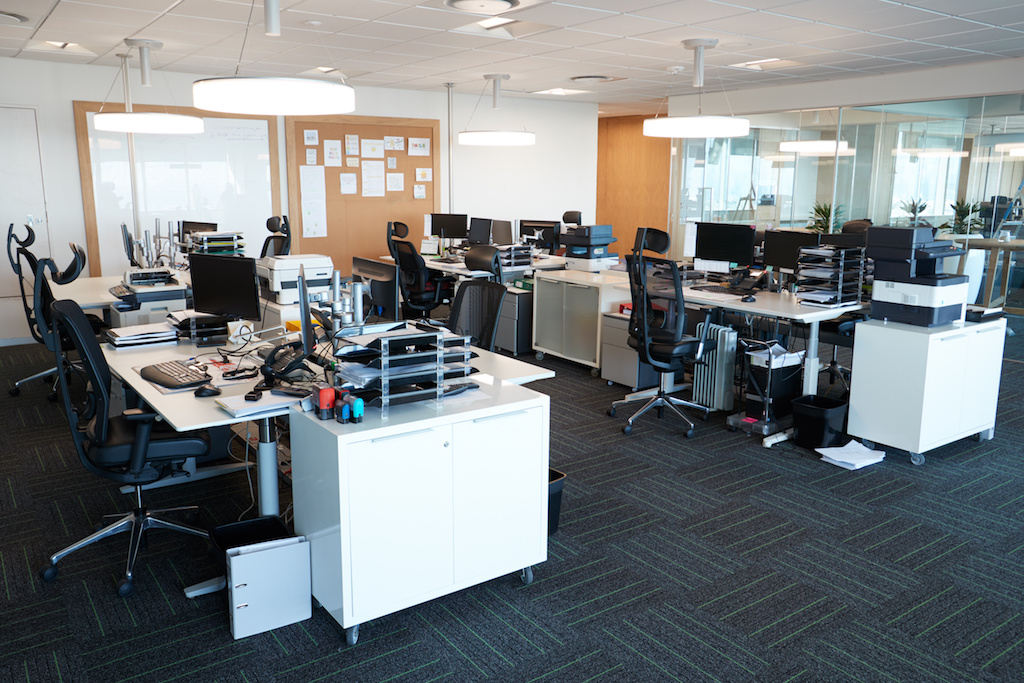In a recently published article, Wall Street Journal reporters Dana Mattioli and Konrad Putzier ask the question, “When It’s Time to Go Back to the Office, Will It Still Be There?” Mattioli and Putzier state that because of the coronavirus pandemic, there will likely be fewer offices in the center of big cities. Companies will build hybrid schedules that will allow workers to stay home part of the week to free up space for social distancing, and smaller satellite offices will pop up in less-expensive suburbs as the workforce becomes less centralized.
The impact of these potential changes for workers is not yet known. It’s likely that some employees will enjoy the reduced commuting time without a requirement to travel to the office every day. Some employees may choose to relocate to the less-expensive offices and not be required to take a cut in pay for relocating to a lower cost of living area.
In addition, some employees may find themselves replaced by lower-cost “offshore” workers. It’s likely that the biggest companies will save on real estate costs if these changes occur, but they may find it difficult to compete for the best talent if cities are still valued by younger workers.
Mattioli and Putzier interviewed a number of executives who point to the success of an unprecedented work-from-home experiment, where productivity has not been impacted despite employees working remotely for months. The biggest potential losers are the commercial real estate market and the pension funds, insurance companies, banks, and others who have invested billions of dollars in commercial buildings. While some CEOs expressed concerns about their ability to maintain company culture while employees work remotely, others believe that it’s possible to maintain that culture while also allowing flexible schedules and remote work for employees.
According to estimates from Moody’s, vacancies in U.S. office buildings will increase from 16.8% to 19.4% by the end of 2020 as the shelter-from-home orders cause businesses to close and lay off their employees. If many employers implement flexible work schedules enabling significant numbers of employees to work remotely, Mattioli and Putzier argue that the office market will never fully recover from the pandemic-induced recession as companies reduce their office space requirements when it’s time to renew their leases.
Tim Logan, reporting for the Boston Globe, confirms many of Mattioli’s and Putzier’s concerns in another recent article. He describes the many changes that companies and employees will have to work through as offices are reopened.
Logan writes that when employers bring workers back to the office, they will require all employees to have their temperature checked every day as they arrive. In the taller office buildings, there will be long lines for the elevators as the number of people allowed inside each elevator will be dramatically reduced to enable social distancing.
Similarly, masks will be mandatory, hand sanitizer dispensers will be everywhere, and more janitors will be present to continually clean frequently visited rooms and constantly touched surfaces. Corridors and walkways could be one-way, and internal doors may be rehung to push outward in both directions. Cubicles could be cordoned off by plexiglass barriers, and stacks of paper that can transmit the disease will be banned.
According to Logan, some companies are planning to bring back only 10 percent of an office’s employees in order to test the validity of the new safety protocols. After the initial group has worked through the new safeguards, offices will gradually add additional employees until no more than 50 percent are in the office at the same time.
Traditional deli trays and platters will not be allowed since they will not meet the required safety standards, and more employees will eat lunch at their desks instead of social distancing in the office lunchroom. While these changes seem stark, several building managers interviewed believe that over time, these changes will blend into the landscape similar to when stanchions and security desks were added to most buildings after 9/11.
As my leadership team and I plan for a return to our offices, the points made in the Wall Street Journal and Globe articles resonate strongly. While compliance with safety and disability requirements was not an issue in the pre-pandemic world, the new world requires a reassessment of the risk of introducing the coronavirus to office-based employees.
Because of the new risks, many of the items discussed by Logan are considerations by our team as well as the leadership teams of other companies and educational institutions. Individual work schedules will be adjusted to accommodate social distancing at the office as well as issues that some employees will face if a rebound of the pandemic forces public schools to go online again and childcare facilities to close.
Over time, if more employees work productively from home, that change will influence the overall office space needs as predicted by Mattioli and Putzier. Fewer employees working out of a central office will also impact local businesses like restaurants and other retail establishments.
Imagine the impact of trying to comply with all these changes as faculty and students return this fall. You can see why the California State University System and University of California System colleges and universities with more than a million students have announced that they’ll be mostly online next year.
In retrospect, emptying the office buildings and campuses around the country was easy compared to reopening them. Without a ready vaccine, economists will be measuring the impact for years.











